Wenkai Lu
Ground-roll Separation From Land Seismic Records Based on Convolutional Neural Network
Sep 05, 2024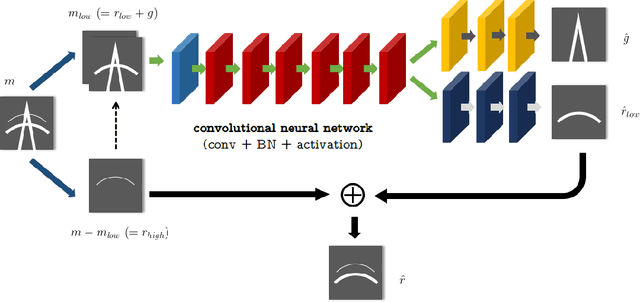

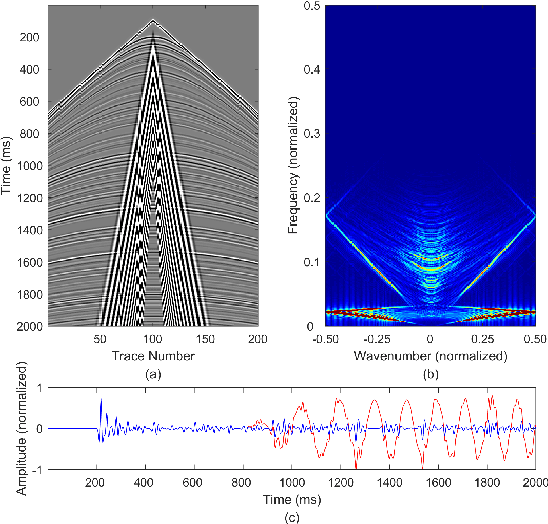
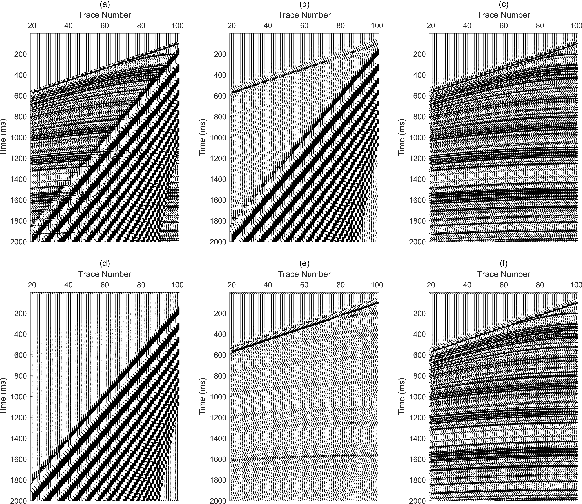
Abstract:Ground-roll wave is a common coherent noise in land field seismic data. This Rayleigh-type surface wave usually has low frequency, low apparent velocity, and high amplitude, therefore obscures the reflection events of seismic shot gathers. Commonly used techniques focus on the differences of ground-roll and reflection in transformed domain such as $f-k$ domain, wavelet domain, or curvelet domain. These approaches use a series of fixed atoms or bases to transform the data in time-space domain into transformed domain to separate different waveforms, thus tend to suffer from the complexity for a delicate design of the parameters of the transform domain filter. To deal with these problems, a novel way is proposed to separate ground-roll from reflections using convolutional neural network (CNN) model based method to learn to extract the features of ground-roll and reflections automatically based on training data. In the proposed method, low-pass filtered seismic data which is contaminated by ground-roll wave is used as input of CNN, and then outputs both ground-roll component and low-frequency part of reflection component simultaneously. Discriminative loss is applied together with similarity loss in the training process to enhance the similarity to their train labels as well as the difference between the two outputs. Experiments are conducted on both synthetic and real data, showing that CNN based method can separate ground roll from reflections effectively, and has generalization ability to a certain extent.
A Deep CNN Model for Ringing Effect Attenuation of Vibroseis Data
Aug 03, 2024



Abstract:In the field of exploration geophysics, seismic vibrator is one of the widely used seismic sources to acquire seismic data, which is usually named vibroseis. "Ringing effect" is a common problem in vibroseis data processing due to the limited frequency bandwidth of the vibrator, which degrades the performance of first-break picking. In this paper, we proposed a novel deringing model for vibroseis data using deep convolutional neural network (CNN). In this model we use end-to-end training strategy to obtain the deringed data directly, and skip connections to improve model training process and preserve the details of vibroseis data. For real vibroseis deringing task we synthesize training data and corresponding labels from real vibroseis data and utilize them to train the deep CNN model. Experiments are conducted both on synthetic data and real vibroseis data. The experiment results show that deep CNN model can attenuate the ringing effect effectively and expand the bandwidth of vibroseis data. The STA/LTA ratio method for first-break picking also shows improvement on deringed vibroseis data using deep CNN model.
Self-Supervised Knowledge-Driven Deep Learning for 3D Magnetic Inversion
Aug 23, 2023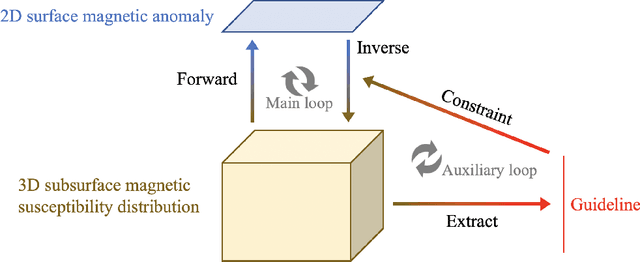
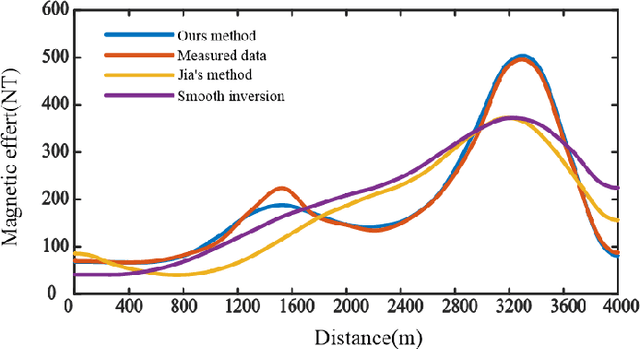
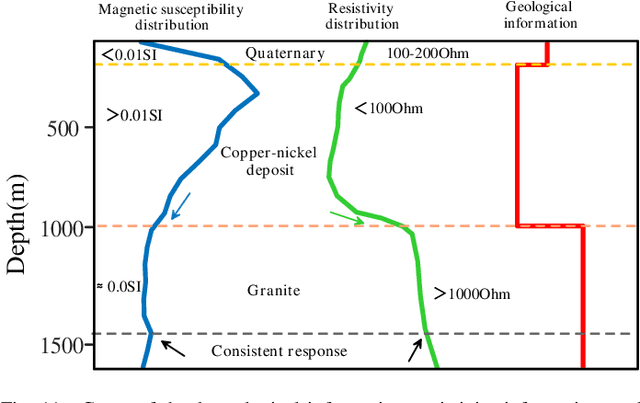
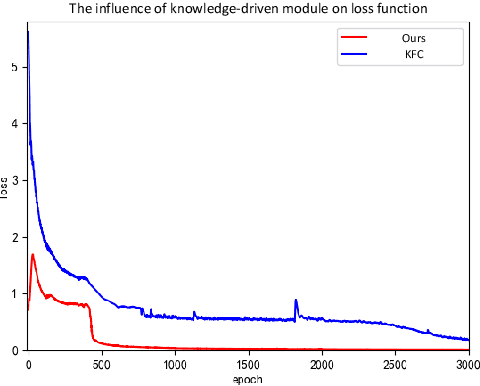
Abstract:The magnetic inversion method is one of the non-destructive geophysical methods, which aims to estimate the subsurface susceptibility distribution from surface magnetic anomaly data. Recently, supervised deep learning methods have been widely utilized in lots of geophysical fields including magnetic inversion. However, these methods rely heavily on synthetic training data, whose performance is limited since the synthetic data is not independently and identically distributed with the field data. Thus, we proposed to realize magnetic inversion by self-supervised deep learning. The proposed self-supervised knowledge-driven 3D magnetic inversion method (SSKMI) learns on the target field data by a closed loop of the inversion and forward models. Given that the parameters of the forward model are preset, SSKMI can optimize the inversion model by minimizing the mean absolute error between observed and re-estimated surface magnetic anomalies. Besides, there is a knowledge-driven module in the proposed inversion model, which makes the deep learning method more explicable. Meanwhile, comparative experiments demonstrate that the knowledge-driven module can accelerate the training of the proposed method and achieve better results. Since magnetic inversion is an ill-pose task, SSKMI proposed to constrain the inversion model by a guideline in the auxiliary loop. The experimental results demonstrate that the proposed method is a reliable magnetic inversion method with outstanding performance.
A Deep Prediction Network for Understanding Advertiser Intent and Satisfaction
Aug 20, 2020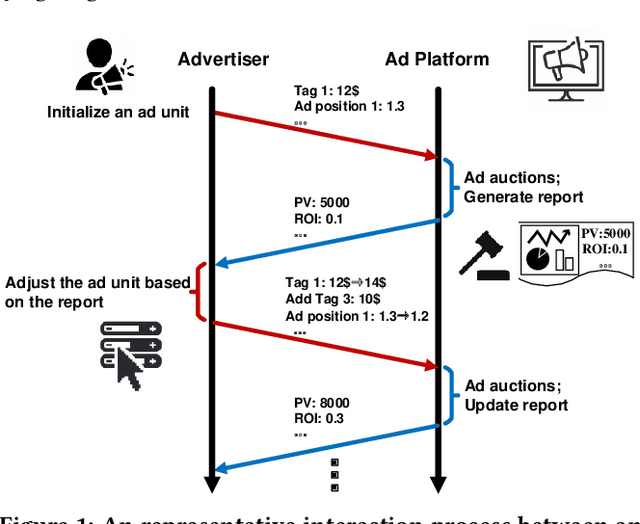

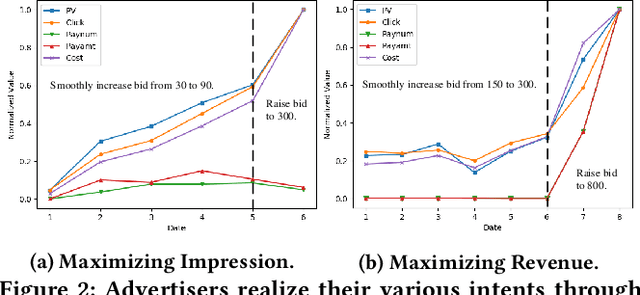
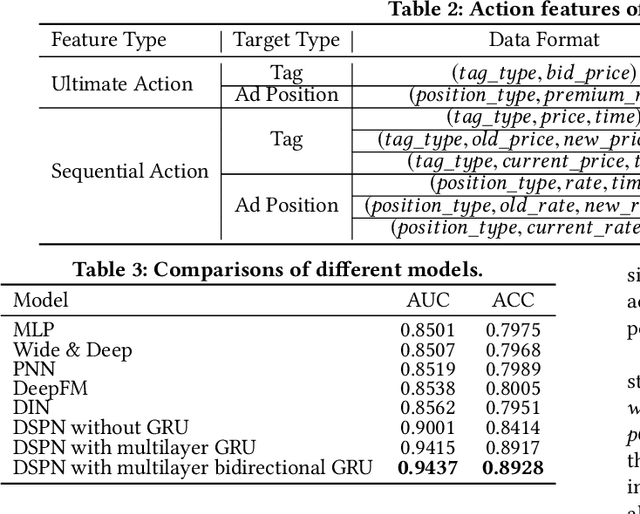
Abstract:For e-commerce platforms such as Taobao and Amazon, advertisers play an important role in the entire digital ecosystem: their behaviors explicitly influence users' browsing and shopping experience; more importantly, advertiser's expenditure on advertising constitutes a primary source of platform revenue. Therefore, providing better services for advertisers is essential for the long-term prosperity for e-commerce platforms. To achieve this goal, the ad platform needs to have an in-depth understanding of advertisers in terms of both their marketing intents and satisfaction over the advertising performance, based on which further optimization could be carried out to service the advertisers in the correct direction. In this paper, we propose a novel Deep Satisfaction Prediction Network (DSPN), which models advertiser intent and satisfaction simultaneously. It employs a two-stage network structure where advertiser intent vector and satisfaction are jointly learned by considering the features of advertiser's action information and advertising performance indicators. Experiments on an Alibaba advertisement dataset and online evaluations show that our proposed DSPN outperforms state-of-the-art baselines and has stable performance in terms of AUC in the online environment. Further analyses show that DSPN not only predicts advertisers' satisfaction accurately but also learns an explainable advertiser intent, revealing the opportunities to optimize the advertising performance further.
 Add to Chrome
Add to Chrome Add to Firefox
Add to Firefox Add to Edge
Add to Edge